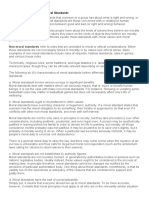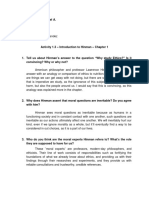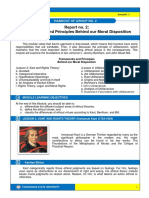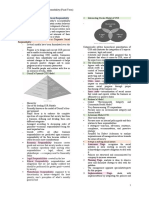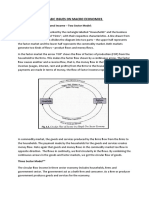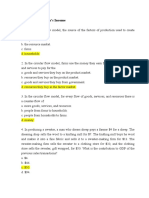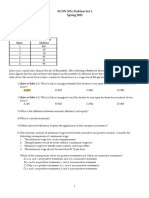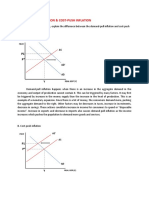0% found this document useful (0 votes)
222 views8 pagesModule 10: The Budget Constraint: Basic Microeconomics Japor
1) The document discusses the economic concept of budget constraints, which represent the combinations of goods and services that consumers can afford given their income and prices.
2) It provides an example of a consumer, Jennifer, who faces a budget constraint between purchasing blouses and movies. Her total budget is 2,800 pesos and she must choose a combination that maximizes her total utility.
3) Total utility increases with consumption but at a decreasing rate, following the principle of diminishing marginal utility, where each additional unit of a good provides less additional satisfaction. Jennifer calculates her total utility for different combinations to determine which provides the highest level of satisfaction given her budget constraint.
Uploaded by
Vera CalusinCopyright
© © All Rights Reserved
We take content rights seriously. If you suspect this is your content, claim it here.
Available Formats
Download as PDF, TXT or read online on Scribd
0% found this document useful (0 votes)
222 views8 pagesModule 10: The Budget Constraint: Basic Microeconomics Japor
1) The document discusses the economic concept of budget constraints, which represent the combinations of goods and services that consumers can afford given their income and prices.
2) It provides an example of a consumer, Jennifer, who faces a budget constraint between purchasing blouses and movies. Her total budget is 2,800 pesos and she must choose a combination that maximizes her total utility.
3) Total utility increases with consumption but at a decreasing rate, following the principle of diminishing marginal utility, where each additional unit of a good provides less additional satisfaction. Jennifer calculates her total utility for different combinations to determine which provides the highest level of satisfaction given her budget constraint.
Uploaded by
Vera CalusinCopyright
© © All Rights Reserved
We take content rights seriously. If you suspect this is your content, claim it here.
Available Formats
Download as PDF, TXT or read online on Scribd
/ 8









